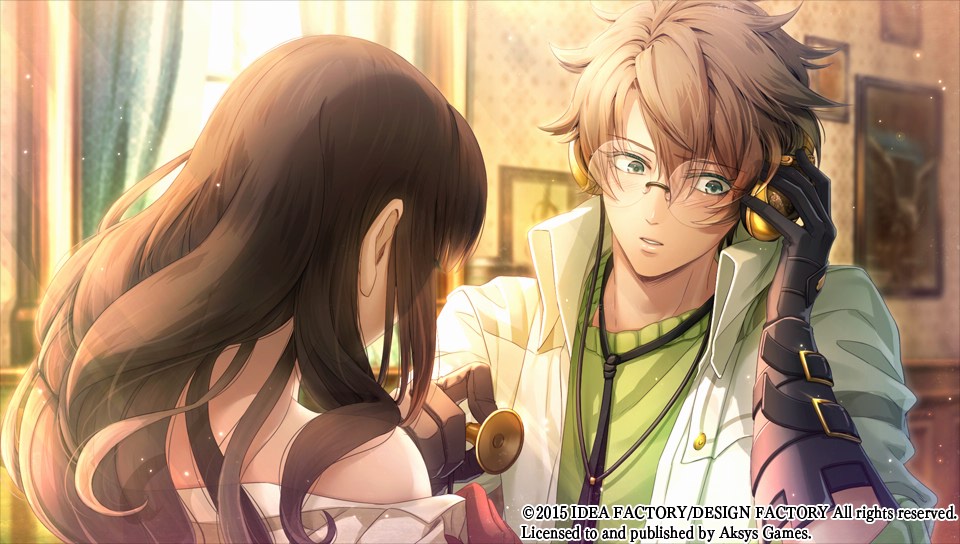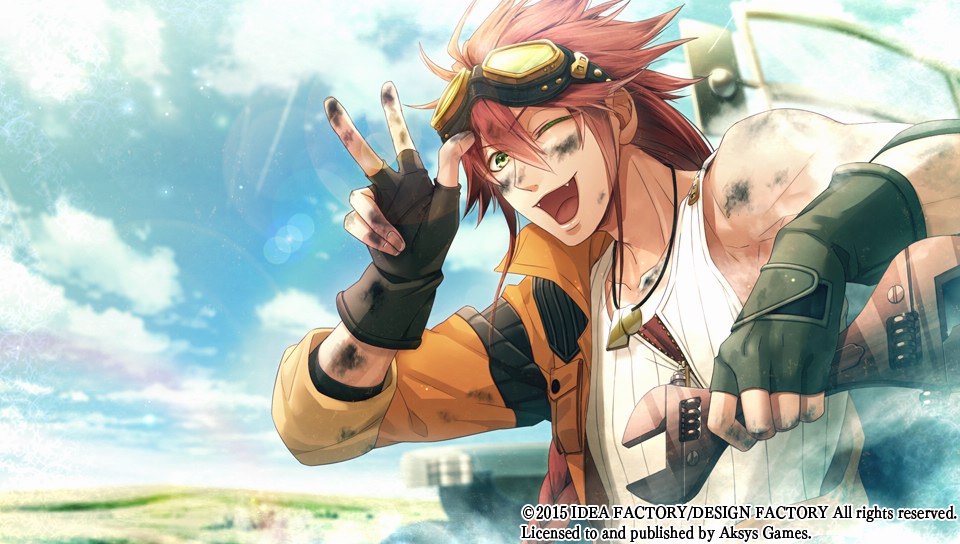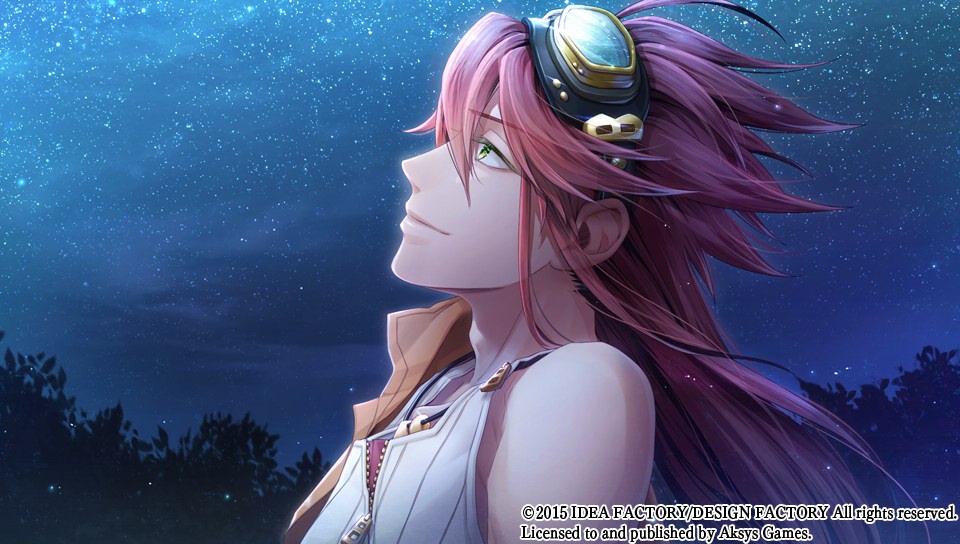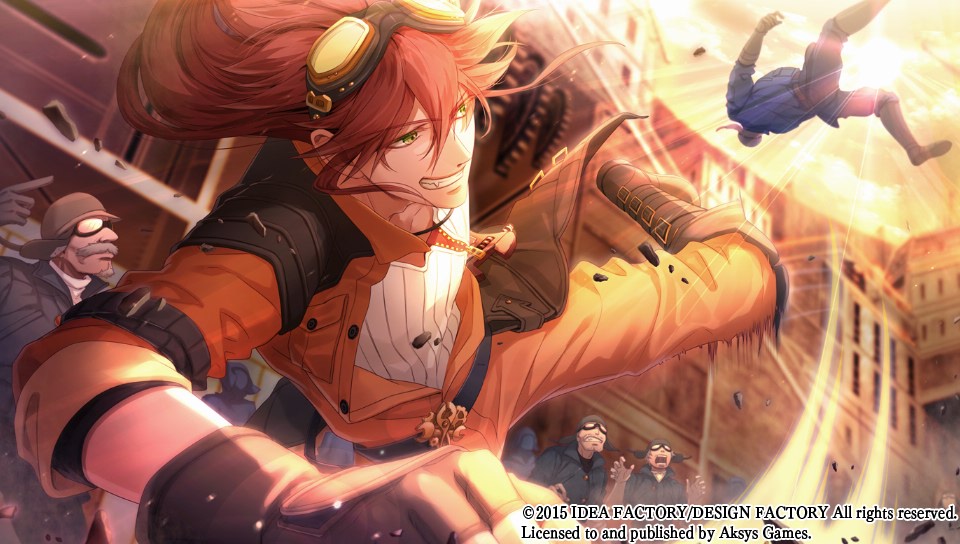Man v. Otome: Code: Realize’s seamless route transitions
Well, I will freely admit that my best-laid schemes certainly gang agley when it came to playing more otome games. There are various reasons for this, but they’re more like excuses than anything else, so sod it. I’m back in the saddle, and I’m damn well going to stop Code: Realize hanging over my head like a dark yet undeniably attractive shadow by making time for it on a regular basis. After all, I wrote about exactly how to handle situations like this — so it’s time to put my own advice into practice.
Code: Realize is my bedtime reading now. And it’s proving to be a solid choice so far. It’s straightforward enough to read that it’s not exhausting when attempting to tackle it during the twilight hours, but it’s interesting enough to keep me engaged. Because I hasten to reiterate: the vast amount of time it’s taken me to get through this game is nothing to do with its quality. It’s entirely to do with my own self-discipline.

Because it had been quite a while since I beat Victor Frankenstein’s route in Code: Realize, I kicked off a new playthrough and decided not to fast-forward through all the text I’d seen before. This proved to be a solid choice, because I’m spotting things that I wouldn’t have paid any attention to first time around already — plus I’m also developing a good appreciation for how Code: Realize does things in terms of the various directions it’s possible for its narrative to proceed in.
Doubtless all of you reading this are familiar with the standard visual novel structure, which applies as much to otome titles as it does to bishoujo games. You start with a common route, which introduces all the main characters and perhaps teases some plot threads, then as a result of the choices you make in said common route, you end up on a character’s distinct route, following that through to an inevitable conclusion that, at some point, involves kissy-kissy time between the protagonist and the love interest of the hour.
Code: Realize absolutely follows this structure and format, but the interesting thing in retrospect, returning to the common route after playing through Victor’s story, is how seamlessly it manages all this. Sure, there are some pretty obvious “favour this one character over another” choices in the early game, but when it comes to the narrative actually proceeding down a particular path, chances are most players won’t notice that there was a “split point” until they’re well past it.

I know this because I didn’t notice it. I actually found myself close to the end of Code: Realize and still wondering when Victor’s route would start. I say Victor’s route specifically because I’d been deliberately favouring him with my choices — he is a good boy, after all — but I suspect the same would have been true for all the other fine gentlemen who make up part of the main cast.
This isn’t a criticism of Victor’s route by any means — in retrospect, Victor absolutely did play a central role in that whole storyline — but the nice thing about it was that the other characters weren’t sidelined at all. They continued to have their own important parts to play, and at no point did I feel like the game was excluding characters in order to push heroine Cardia and Victor together in an artificial manner. In fact, it was extremely late in the game before any real signs of romance actually revealed themselves at all, allowing the intrigue of the main narrative to really shine through.
Since it’s so difficult to notice that “split point”, it’s kind of hard to analyse exactly how and why it works so well. But in itself, that’s a sign that it has been composed well. Rather than being treated as a single story for the common route, then several discrete stories for the character routes, Code: Realize’s narrative is set up in such a way that its common route can naturally flow into a love interest’s storyline without you noticing at all. And that’s some solid writing at work.

Returning to the beginning of Code: Realize with the knowledge that this is how it does things, I find myself looking out for the signs that the narrative might be diverging at any point. I’m still early in my second playthrough so far — I’m favouring Impey this time — but so far the common route is proving to be fairly strict in its implementation. Any opportunities to go off with an individual character inevitably end up with everyone getting back together again shortly afterwards, although the brief, unique scenes you do get provide a bit of insight into the characters in question.
Impey’s a peculiar character who is both likeable and a total sleazeball at the same time. The completely inappropriate things he says to Cardia early in their relationship are borderline unforgivable at times — no means no, mister — and yet at the same time you also get the distinct impression that he wouldn’t hurt a fly; it’s all talk. Indeed, many other characters — particularly Lupin, with whom Impey has a fun dynamic — frequently call him out on this, which helps take a bit of the sting out of his more sleazy comments.
Impey, it seems, is one of those characters who desperately wants to put across the impression that he is an experienced womaniser. And yet one gets the distinct feeling from the things the other characters say that he is anything but experienced. In some respects, this isn’t surprising — if the way he treats women he’s just met is to talk about how he’s going to get them into bed, no-one’s going to let him get anywhere near them — but it also provides the sense that he’s hiding something.

Given the conventions of the genre, Impey is almost certainly hiding something — likely some sort of intense emotional vulnerability — but even if this may be a predictable trope at this point, it’s still an interesting setup. And however obnoxious some of his initial comments might seem, Cardia, to her credit, is having absolutely none of it, and manages to deflect pretty much all of them through a combination of her own innocence about the world, the self-hatred she feels throughout much of the story and some occasional girlboss vibes.
After all, you don’t live your life as someone who’s able to melt the face off a dog with a single touch without developing a certain amount of misguided pride in yourself, do you? Even if said pride is inevitably accompanied by intense guilt and disgust at the things you’re capable of. Cardia knows that she’s powerful — a “monster”, as both she and her father Isaac put it — and she knows that, if the worst comes to the worst, she could use her acidic, poisonous skin to get herself out of a lot of dangerous situations.
Of course, one of the interesting things about Cardia is that she deliberately doesn’t make use of her unique abilities unless absolutely necessary. They’re a reminder of a side of her that isn’t really “human”, and thus she prefers to keep them locked away as much as possible. She doesn’t want to hurt anyone — even those who wish her harm — and, at least early in the game, feels like she doesn’t deserve to live, and thus there are times where she simply refuses to defend herself at all.
That’s partly what all Code: Realize’s various character routes are about, though — as well as Cardia developing a relationship with one of the fine gentlemen on offer (and/or Impey), they’re also about her accepting herself, understanding how to live with her condition — and perhaps figuring out a way to deal with it once and for all.

In fact, on some levels, one can look at Impey’s inappropriate comments as being a positive thing for Cardia; he absolutely does not see her as a monster, even having an awareness of what she’s capable of. Sure, it might be nice if he treated her a little less as a sexual object and more as a person early in their relationship — but as I’ve already seen in Victor’s route, he does manage to bring his lustful ardour somewhat under control as time goes on, particularly as it becomes clear that Cardia is sticking around and thus it would probably be best for everyone if he treated her with a little more respect.
Anyway, possibly against my better judgement, my target for this Code: Realize playthrough is the one and only Impey Barbicane — so I’ll be sure to report back when some more progress has been made!
Code: Realize is available now for Nintendo Switch digitally and physically.
Join The Discussion
Rice Digital Discord
Rice Digital Twitter
Rice Digital Facebook
Or write us a letter for the Rice Digital Friday Letters Page by clicking here!
Disclosure: Some links in this article may be affiliate links, which means we may earn a small commission if you make a purchase after clicking on them. This is at no additional cost to you and helps support Rice Digital!
- Letter from the Editor: passing the torch - June 30, 2023
- Super Woden GP 2 is looking promising - June 30, 2023
- Inti Creates is making a 32 bit-style Love Live action platformer - June 26, 2023







